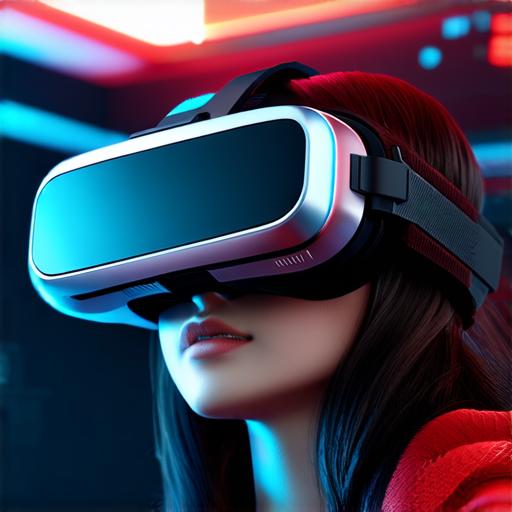Virtual Reality Basics
Virtual reality is a computer-generated simulation of a real or imagined world that users can interact with using specialized devices such as headsets, hand controllers, and sensors. The idea behind VR is to create an environment that feels as close to the real thing as possible, so users feel like they are physically present in the simulated world.
Virtual Reality Basics
There are two main types of virtual reality: immersive VR and non-immersive VR. Immersive VR involves a full headset and sensors that track the user’s movements, providing them with a completely immersive experience. Non-immersive VR involves simpler devices such as smartphones or tablets, which can be used to view 360-degree videos.
Virtual Reality Applications
The potential applications of virtual reality are vast and varied, from gaming to education, healthcare, and entertainment. Here are some examples:
Gaming
Virtual reality has revolutionized the gaming industry, providing players with a more immersive and interactive experience. Games such as “Beat Saber” and “Job Simulator” have become popular among gamers, and VR is also being used to create more realistic and interactive sports games.
Education
Virtual reality has the potential to transform education by providing students with a more immersive and engaging learning experience. For example, medical students can use virtual reality simulations to practice surgeries, while history students can explore ancient civilizations in 3D.
Healthcare
Virtual reality is being used in healthcare to treat various conditions, such as PTSD, anxiety disorders, and phobias. It’s also being used for pain management, as well as for rehabilitation after injuries or surgeries.
Entertainment
Virtual reality is also being used in entertainment, from live concerts and movies to amusement parks and museums. For example, the “The Void” is a VR arcade that offers interactive experiences based on popular movies and games.
Understanding Virtual Reality Devices
There are several devices used in virtual reality, each with its own specific purpose:
Headsets
Virtual reality headsets are worn by the user to provide them with a 360-degree view of the simulated environment. There are two main types of VR headsets: high-end and low-end. High-end headsets, such as the Oculus Quest 2, offer a more immersive experience, while low-end headsets, such as Google Cardboard, are more affordable.
Hand Controllers
Hand controllers are used to track the user’s hand movements and translate them into actions in the virtual world. They typically come with VR headsets and can be customized with various gestures and movements.
Sensors
Sensors, such as cameras and motion sensors, are used to track the user’s movements in real life and translate them into the virtual world. They typically come with VR headsets and are essential for providing an immersive experience.
Virtual Reality vs. Augmented Reality
Virtual reality and augmented reality are often confused, but they are two different technologies. Virtual reality is a fully immersive experience that creates a simulated environment that users can interact with, while augmented reality overlays digital information onto the real world. Examples of augmented reality include Snapchat filters and Pokémon Go.
Understanding Virtual Reality vs. Augmented Reality Devices
Virtual reality devices typically consist of a headset, hand controllers, and sensors, while augmented reality devices often use smartphones or tablets to display digital information over the real world. However, there are some devices that can be used for both virtual and augmented reality experiences, such as the ARKit framework on iOS devices.
Virtual Reality Future
The future of virtual reality is bright, and we can expect to see even more innovative uses of this technology in various industries. Here are a few examples:
Telecommunication
Virtual reality could be used for telecommunication, allowing people to interact with each other in a 3D environment, even if they are thousands of miles apart.
Tourism

Virtual reality could be used to allow people to explore destinations around the world from the comfort of their own homes. This would not only be more convenient but also more eco-friendly, as it would reduce travel emissions.
Real Estate
Virtual reality could be used to allow potential buyers to virtually walk through a property and see its features in detail. This would save time and money for both buyers and real estate agents.
Summary
Virtual reality is an exciting technology that has the potential to revolutionize various industries, from gaming to education and healthcare. Understanding virtual reality devices and their applications can help developers create more immersive and engaging experiences for users. As virtual reality continues to evolve, we can expect to see even more innovative uses of this technology in the future.
